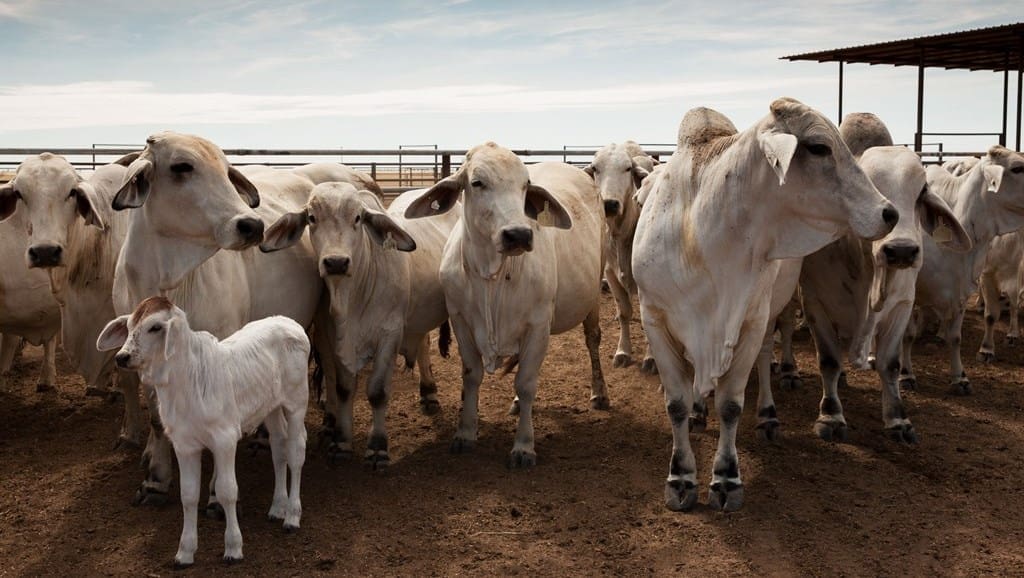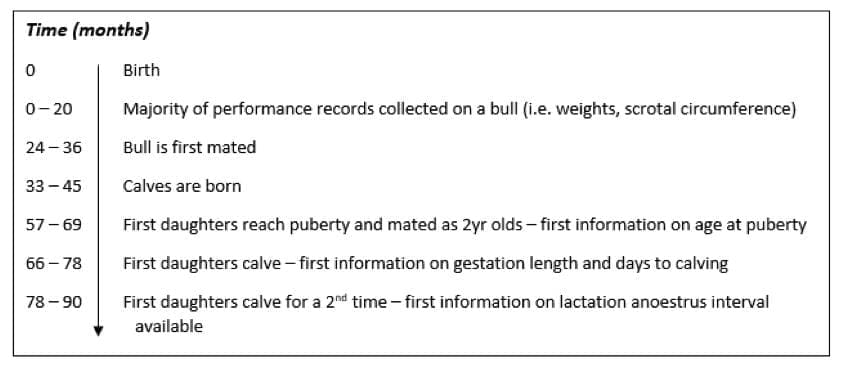
Reproductive rate is one of, if not the most significant factor in determining enterprise profitability. Making selection decisions on reproduction is often one of the more challenging undertakings for producers.
Within herd, selection for reproduction is often undertaken on the basis of data collected on individual animals. Selection decisions are generally informed by the pregnancy rates of the herd, and further refined through comparisons on production outcomes such as weaning weights.
While the regular review and culling of non-productive females, combined with management decisions around joining times and feeding strategies to maximise condition and liveweight, these are areas that fall within the context on environmental constraints.
Making selection decisions around genetics is often more challenging, particularly since many of the genetic traits associated with reproduction have low heritability, are limited to sex, and often may not be expressed until later in life.
This can delay making selection decisions on genetically superior animals and forcing producers to rely on the data they collect from individuals.
Time is a major constraint on selection decisions for reproduction, compared to decisions on other traits such as growth or carcase attributes.
In a recent publication from the Animal Genetics & Breeding Unit, Dr David Johnstone highlighted the challenge of time constraints on making genetic selection decisions for reproduction.

Source: Genetic improvement of cow reproduction in northern Australia beef cattle breeds – Kirsty L. Moore, Matt L. Wolcott and David J. Johnston
In looking at the time-frame above, it’s possible to see that most of the information regarding a bull’s growth and using ultrasound data on carcase traits such as marbling have been collected by around 20-22 months of age. Producers can make reasonably informed selection decisions on a bull’s genetic potential for these traits.
However, in the case of selection for cow reproduction, genetic information is restricted to what may have been recorded from female relatives (i.e. grand dam, dam, half-sisters, half-aunts). It takes around 6-7 years before the first direct information on a bull can be recorded on his daughters.
Tools to focus on improving the genetics of reproduction
Within the suite of tools available for producers to make genetics selections, there are some well-established tools that producers can use when seeking to focus on improving the genetics of reproduction.
The first, Days to Calving (DTC) EBV is defined as the time from first exposure to the bull to the birth of the resulting calf. The trait is recorded only for naturally mated cows.
Cows that fail to calve are penalised by giving them a score based on the maximum days to calving within the contemporary group plus 21 days for temperate breeds or 42 days for tropical breeds.
The challenge with Days to Calving is that it is both lowly heritable and difficult to record without accurate recoding of when the bull went in and calving dates.
However the value of the trait for producers is not only in its identification of females that may be genetically more reproductive, but it has been identified that genetics for shorter days to calving are also associated with the genetics for higher percent of normal sperm, and to a lesser degree genetics for larger scrotal circumferences.
This offers producers an opportunity to select for reproductive traits in both their heifer and bull calves.
Gestation length
The other commonly used trait for many producers is gestation length. This EBV describes the number of days between conception and birth.
Like days to calving, the challenge with collecting the data for this EBV lies in knowing date of calving. However, when the data is collected and used (as previously discussed in Beef Central) decreasing gestation length has been shown to reduce calving difficulties and enable more cows to maintain an annual calving pattern.
More recently, research conducted through large-scale programs including the CRC for Beef Genetic Technologies, the northern Repronomics project and associated programs has highlighted some exciting opportunities to collect information to enhance the genetic information available to producers.
Two of the more useful measures include Age at puberty, which has been shown to be an important aspect of reproduction along with Anoestrus interval. This interval is the time between calving and the recommencement of cycling.
These two measures open up some exciting possibilities, particularly for northern producers who are seeking to use genetics to increase reproductive rates. While age at puberty and lactation anoestrus interval capture different aspects of reproductive performance, the two traits have a moderately positively correlation.
Estimates through research with leading beef researchers such as Dr David Johnston suggest genetic correlations of 0.29.
While both of these traits are highly heritable, they can be difficult to scan and record. Fortunately, the genomic reference population the industry has access to through the Repronomics project along with data from the Beef CRC and MLA Donor Company Kaiuroo Brahman herd allows genomic information on these traits and the linkages they have to the industry to be used in order to make genomic selections for age at puberty and lactation anoestrus interval.
The impact of this resource has already been seen in the tropical breeds. Data from ovarian scanning across the refence population has been included in the Days to Calving EBV and has seen accuracy of the trait within the Brahman breed increase in young animals by 14.7pc.
In the other tropical breeds with recorded data such as Santa Gertrudis and Droughtmaster, the use of data collected through the reference population along with single-step genomic selection has also increased accuracy of the Days to Calving by 6pc and 6.2pc, respectively, for Droughtmaster and Santa Gertrudis genetic evaluations.
Fundamentally these developments offer producers greater scope to make more accurate genetic selections on animals earlier in the productive lifetime.
Rather than making selection decisions solely on the basis of individual performance, the enhancements to EBVs and genomic information can speed up the progress of improvement and make more opportunities for producers to target an area that directly impacts their profitability.
 Alastair Rayner is the Principal of RaynerAg, an agricultural advisory service based in NSW. RaynerAg is affiliated with BJA Stock & Station Agents. He regularly lists and sell cattle for clients as well attending bull sales to support client purchases. Alastair provides pre-sale selections and classifications for seedstock producers in NSW, Qld and Victoria. He can be contacted here or through his website www.raynerag.com.au
Alastair Rayner is the Principal of RaynerAg, an agricultural advisory service based in NSW. RaynerAg is affiliated with BJA Stock & Station Agents. He regularly lists and sell cattle for clients as well attending bull sales to support client purchases. Alastair provides pre-sale selections and classifications for seedstock producers in NSW, Qld and Victoria. He can be contacted here or through his website www.raynerag.com.au
